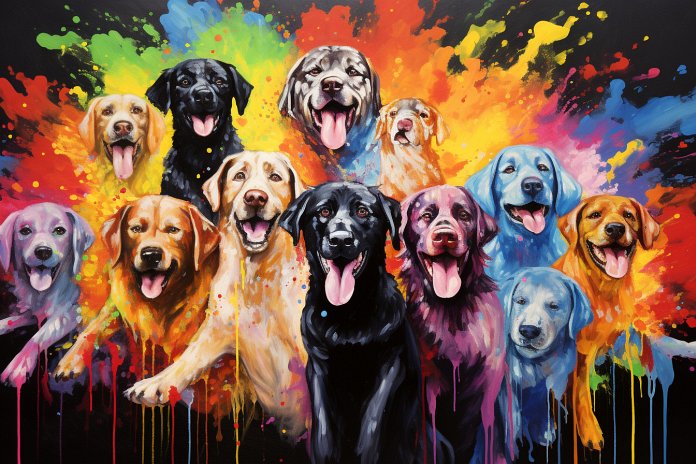
Animals, especially dogs, have always fascinated humans with their hunting skills and impressive senses. While much is known about their excellent hearing and sense of smell, not as much is known about their vision. Contrary to popular belief, dogs can see more than just black and white. This new understanding of dogs’ vision can help owners better understand their pets and how they perceive the world. In this article, we will explore the colors that dogs can see.
Signs Your Dog Can’t See All Colors
You may have already noticed that your dog sees the world differently than you do. Their eye structure is different, and they may struggle to find objects in certain environments. For example, if you play fetch with a green ball on green grass, your dog may have trouble spotting it. Dogs primarily see shades of yellow and blue, so colors like red and green can be challenging for them to distinguish. This lack of color differentiation can make it difficult for dogs to see certain objects.
Body Language
In addition to their limited color vision, dogs also exhibit body language that indicates what they can and cannot see. Some signs to look out for include staring, being alert, head tilting, and wagging their tail. Dogs may also show a preference for toys in colors they can see and choose one toy over another based on its color.
History of Dogs Seeing Color
In the past, it was believed that dogs had poor vision and could only see in black and white. This myth persisted for decades until Russian scientists conducted an experiment in 2013, proving that dogs can see a limited range of colors. This discovery challenged the previous theories and led to a better understanding of dogs’ vision.
Science Behind Dogs Seeing Color
The structure of a dog’s eye differs from that of a human, which explains their different color perception. Dogs have more rods than humans, allowing them to see better in low-light conditions. However, humans have more cones, which are responsible for color perception. Dogs only have two types of cones, limiting their ability to see reds and greens. Instead, they primarily see shades of blue and yellow.
Dealing With Dogs Seeing Color
Fortunately, dogs don’t seem to mind their limited color vision. However, you can still have fun with your pet by engaging them in activities that take their vision into account. For example, you can train your dog to sort clothing or toys based on color. Just remember to adjust your expectations and not be disappointed if they can’t perform complex tasks.
Understanding your dog’s vision not only enhances your connection with them but also helps you provide a better environment suited to their visual capabilities.
Understanding your dog’s ability to see colors can enhance your connection with your pet.

Tips & Things to Know
1️⃣ Dogs can see a limited range of colors, mainly shades of blue and yellow. They have difficulty distinguishing between red and green, so using toys in these colors may make it difficult for them to see.
2️⃣ Dogs exhibit body language signs that show what they can and cannot see. Signs such as staring, head tilting, and favoring toys in colors they can see can indicate their visual capabilities.
3️⃣ Despite not being able to see the full-color spectrum like humans, dogs can still be trained to differentiate between colors. Using commands and training techniques, you can teach your dog to sort objects by color, which can be a fun and engaging activity for both you and your pet.
Frequently Asked Questions, Answered ✅
1. Can dogs see in color?
– Yes, dogs can see a limited range of colors, mainly shades of blue and yellow.
2. Why do dogs have difficulty seeing certain objects?
– Dogs have difficulty seeing certain objects because they cannot distinguish between certain colors, such as red and green.
3. What are some body language signs that show what dogs can and cannot see?
– Some body language signs include staring, being alert, head tilting, and wagging their tail.
4. What was the common myth about dogs’ vision in the past?
– The common myth was that dogs could only see in black and white and had poor vision.
5. How do dogs’ eyes differ from humans’ eyes in terms of color perception?
– Dogs have more rods than humans, allowing them to see better in low-light situations, but they have fewer cones, which control color perception. Dogs can’t see reds and greens, only shades of blue and yellow.